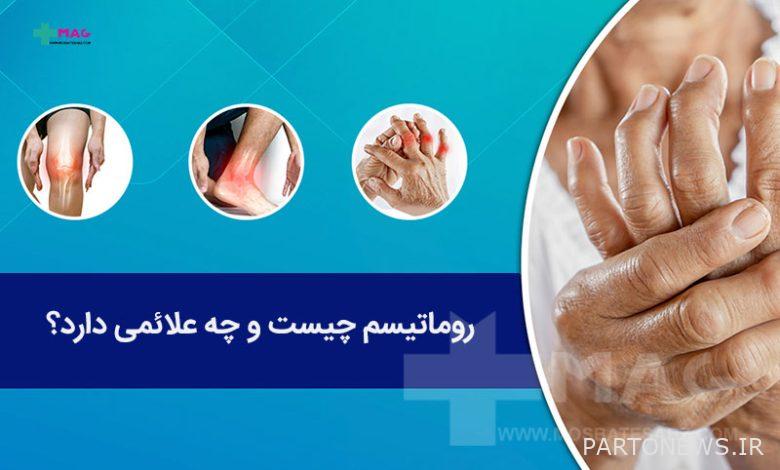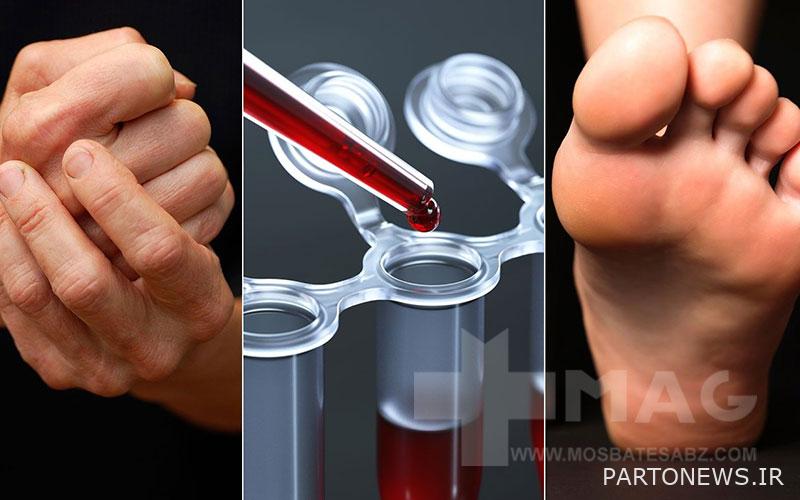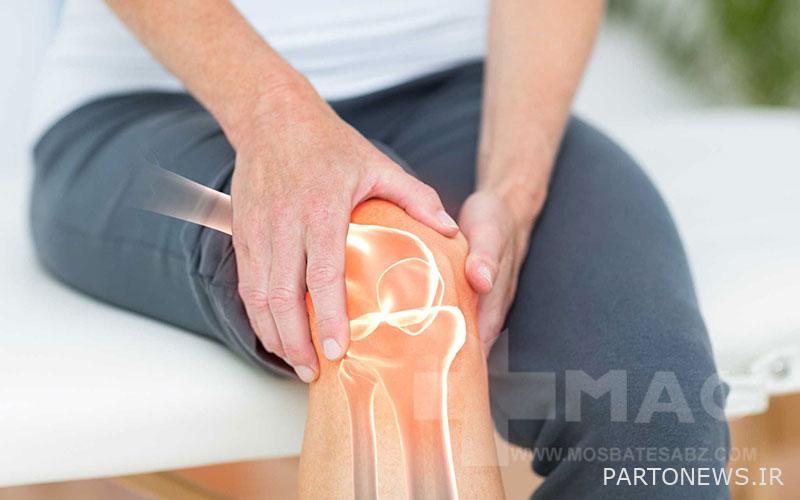What is rheumatism and what are its symptoms?

Rheumatoid arthritis or rheumatism is a disease that affects the joints and causes inflammation and pain. In this article from the Green Positive Online Pharmacy magazine, we will introduce you more to this autoimmune disease.
What is rheumatism?
Rheumatoid arthritis is an autoimmune disease that causes joint pain and inflammation and may affect the entire body. Joint damage caused by rheumatism often occurs on both sides of the body. That is, if a joint in one of your arms or legs is affected by rheumatoid arthritis, the same joint in the other arm or leg will also be affected. In this way, doctors distinguish rheumatism from other forms of arthritis such as osteoarthritis. If rheumatoid arthritis is diagnosed in the early stages, the treatment will have a better result.
Rheumatoid arthritis symptoms
There are more than 200 types of rheumatism, one of which is joint rheumatism or rheumatoid arthritis. The symptoms of this disease often affect the joints of the hands, wrists, and knees, but it can also affect the tissues and organs of the entire body, such as the lungs, heart, and eyes. Signs and symptoms of rheumatism can include the following:
- Pain in more than one joint
- Stiffness in more than one joint
- Tenderness and swelling in more than one joint
- Common and identical symptoms on both sides of the body
- Loss of joint function and deformity
- tiredness
- Low grade fever
- Loss of appetite
- weakness
The mentioned symptoms can be mild, moderate or severe.
The cause of rheumatoid arthritis
There are a number of genetic and environmental factors that may increase the risk of developing rheumatoid arthritis. As we said, rheumatism is an autoimmune disorder that occurs as a result of the immune system attacking healthy body tissues. However, the cause of this disease is still unknown. If you have rheumatoid arthritis, your immune system sends antibodies to the lining of your joints as part of the disease process.
These antibodies attack the tissues lining your joints, causing the synovial cells to divide and cause inflammation. During this process, chemicals are released that can damage the adjacent bones, cartilage, tendons, and ligaments. If rheumatoid arthritis is not treated, the affected joint will lose its normal shape and form and eventually die.
Factors affecting the occurrence of rheumatism
The following increase the risk of developing rheumatoid arthritis:
- Age: Most patients are over 50 years old.
- Gender: Women are more likely to be affected than men.
- Genetics: People who are born with certain genes called HLA class II genotypes are more prone to developing rheumatoid arthritis.
- Women who have never given birth in their lifetime.
- Children whose mothers smoke have twice the risk of developing rheumatoid arthritis as adults.
- Smoking: Studies show that people who smoke are at an increased risk of developing rheumatoid arthritis.
- Obesity can increase the risk of developing rheumatism.
- Diet: High consumption of salt, sugar, red meat and iron-rich foods are associated with the risk of developing rheumatoid arthritis.
Rheumatoid arthritis or joint rheumatism diagnosis method
Several different tests may need to be done before a doctor can accurately diagnose rheumatoid arthritis. First, the doctor will ask about the symptoms and medical history of the person. A physical examination of the joints will also be performed, which includes the following:
- Checking for swelling and redness (if any)
- Examination of joint function and range of motion
- Palpate affected joints to check for warmth and tenderness
- Checking skin nodules
- Reflex and muscle strength test
To diagnose rheumatism, you should see a rheumatologist. Blood test and imaging (sonography or MRI) should be done for more certainty. Tests can show both joint damage and its severity.

Blood tests for rheumatoid arthritis
There are several types of blood tests that can help a rheumatologist determine whether or not a person has rheumatoid arthritis. These tests are:
- Rheumatoid factor test: High levels of rheumatoid factor are associated with autoimmune diseases, especially rheumatoid arthritis.
- Anti-citrulline antibody test: This test looks for antibodies associated with rheumatoid arthritis.
- Antinuclear antibody test: The immune system is checked to see if it produces antibodies to the nucleus of cells.
- Red blood cell sedimentation rate: shows the level of inflammation in the body.
- CRP or C-reactive protein test: A severe infection or significant inflammation anywhere in the body can trigger your liver to make C-reactive protein. High levels of this inflammatory marker are associated with rheumatoid arthritis.
Treatment of rheumatism
Unfortunately, there is no cure for rheumatoid arthritis, but with the help of strategies, this disease can be controlled and the possibility of damage can be minimized. In fact, these solutions can slow down the progress of the disease. Treatments may include:
- taking medication
- Home treatment
- Change in diet
- Doing some special sports
Best drugs for rheumatoid arthritis
Related posts
Various types of medications are prescribed for rheumatoid arthritis, some of which can help reduce pain and inflammation. Others limit the damage that can be done to the joint. Over-the-counter medications to reduce pain and inflammation include:
- Non-steroidal anti-inflammatory drugs
- Corticosteroids
- Acetaminophen (only relieves pain and has no effect on inflammation)
The following medications can help reduce the damage that rheumatoid arthritis can do to your body:
- Disease-modifying antirheumatic drugs: They work by blocking the immune system’s response. In this case, the progress of the disease will be slower.
- Biologics: Instead of blocking the entire immune system response, they provide a targeted response to inflammation.
- Inhibitors Janus kinase : are a subset of disease-modifying antirheumatic drugs that block some immune responses.
Home remedies for rheumatism
For the treatment of rheumatoid arthritis, the following solutions are effective:
Sport
Sports that don’t involve a lot of impact can help improve joint range of motion and increase mobility. Also, exercise can strengthen muscles and reduce pressure on joints. Yoga is a sport that works on the flexibility of the body and seems suitable for people with rheumatism.
Adequate rest
Especially when the disease worsens, a person needs more rest. Adequate sleep helps reduce inflammation, pain and fatigue.
Cold or hot compress
A cold compress can help reduce inflammation and pain. It may also be effective against muscle spasms. A warm compress is also useful for relieving joint stiffness.
Orthopedic equipment
You can use orthopedic equipment such as splints to relieve rheumatism. The splint keeps the joints stable and gives them rest. In this case, it may help reduce inflammation. Some people may also need crutches.

Suitable diet for rheumatic people
Anti-inflammatory diet can be very suitable for improving rheumatoid arthritis. These foods include foods that are rich in omega-3 fatty acids and reduce inflammation. Like:
- Fatty fish such as salmon, tuna, herring
- Chia seeds
- walnut
- Flax seed
Antioxidants such as vitamins A, C and E and the mineral selenium may also help reduce inflammation. Foods rich in antioxidants include:
- Berries
- Dark Chocolate
- spinach
- Red beans
- artichoke
Eating a lot of fiber is also important. Whole grains and vegetables should not be forgotten.
Foods containing flavonoids are also effective in fighting inflammation in the body. Like:
- Soy products
- Berries
- Green tea
- Broccoli
- grape
Eating foods that contain processed carbohydrates or trans or saturated fats should also be avoided.
The difference between rheumatoid arthritis and osteoarthritis
People with arthritis, like people with rheumatoid arthritis, can experience joint pain and stiffness when moving. Arthritis sufferers may experience joint swelling after prolonged activity. But in this disease, the inflammation is not significant and does not lead to redness of the affected joints. Arthritis is not an autoimmune disease and is related to the normal wear and tear of joints with age. That is, it is more common in the elderly. Of course, it can sometimes occur in young people, especially athletes. Joint damage associated with rheumatism is not caused by normal wear and tear, but by the body’s own attack on the joints.
Is rheumatism hereditary?
Rheumatoid arthritis cannot be considered a hereditary disease, but it can be seen in some families. The cause of this issue may be related to environmental, genetic or a combination of both. If you have someone in your family who has rheumatism, see your doctor immediately if you notice any suspicious symptoms. Having a family history of rheumatoid arthritis increases the risk of developing this disease, and early diagnosis can be very effective in preventing the progression of the disease.
final word
In this article, we have explained everything you need to know about rheumatism or rheumatoid arthritis. Especially if you have someone in your family who is suffering from this disease, be alert and see an orthopedic doctor immediately if you see the symptoms we have introduced.
Please rate this article
[مجموع: ۰ میانگین: ۰]


